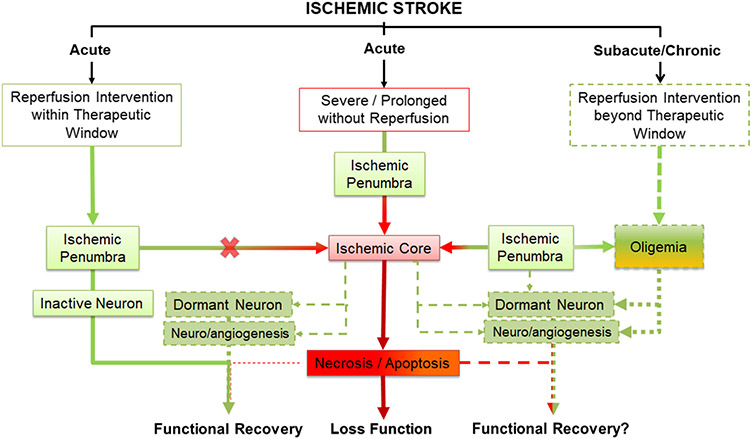Figure 2.
The schematic depicts three possible outcomes after ischemic stroke. In the center, severe and prolonged ischemic stroke without timely blood flow restoration leads to transition of the ischemic penumbra into infarct core, progressive deterioration of cells in the ischemic penumbra to irreversible cell death through necrosis and apoptosis, and ultimately the loss of function. In the left, reperfusion within the therapeutic window prevents the conversion of ischemic penumbra into infarct core, restores function of inactive neurons in the penumbra, re-establishes function of dormant neuron and neurovascular niche for the neurogenesis and angiogenesis in the core, and thus ultimately leads to full or partial functional recovery. In the right, delayed reperfusion intervention at subacute/chronic phase beyond therapeutic window might restore neuronal function of oligemia brain tissue, re-establishes function of dormant neuron and neurovascular niche for the neurogenesis and angiogenesis in the core, and potentially leads to full or partial functional recovery.

